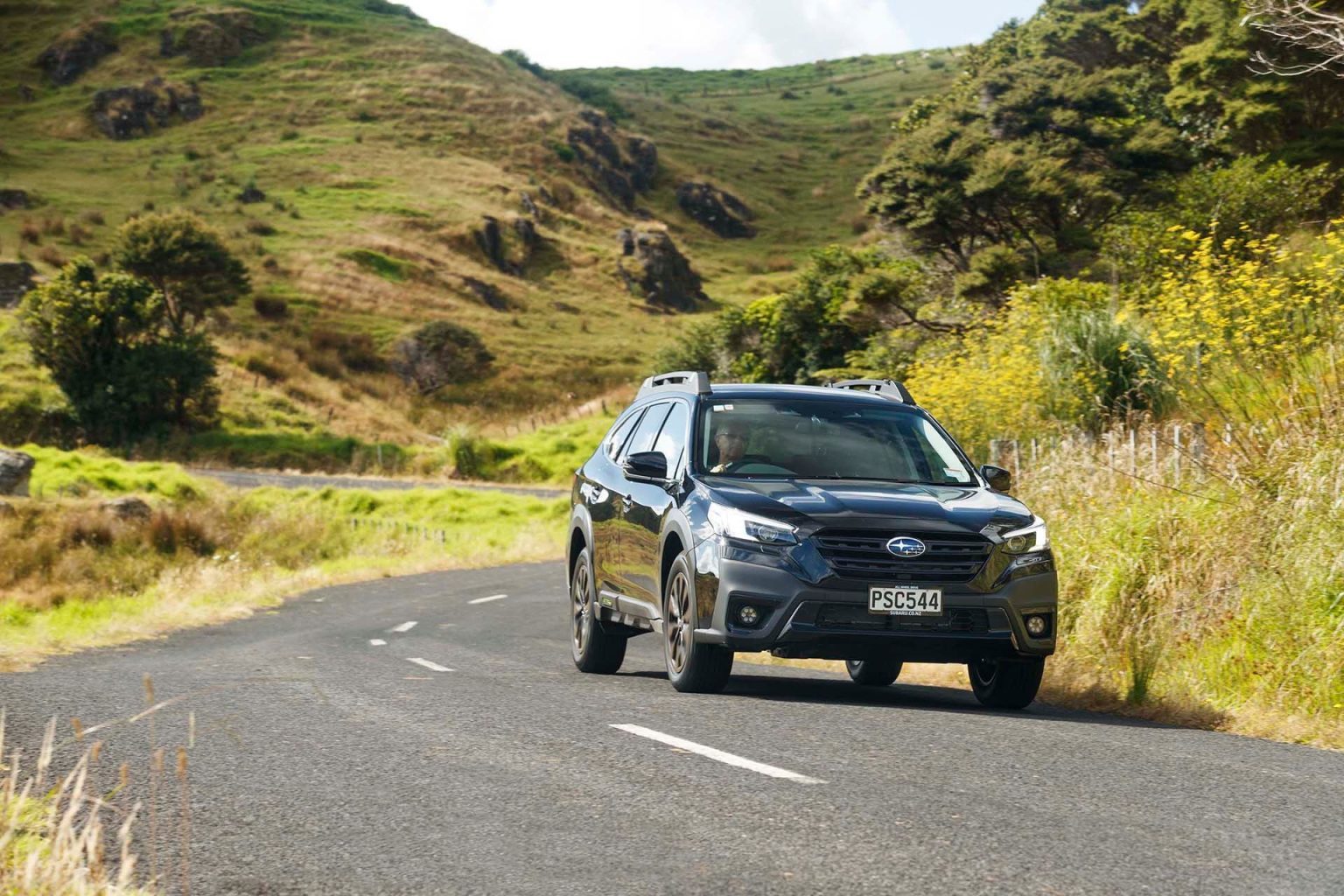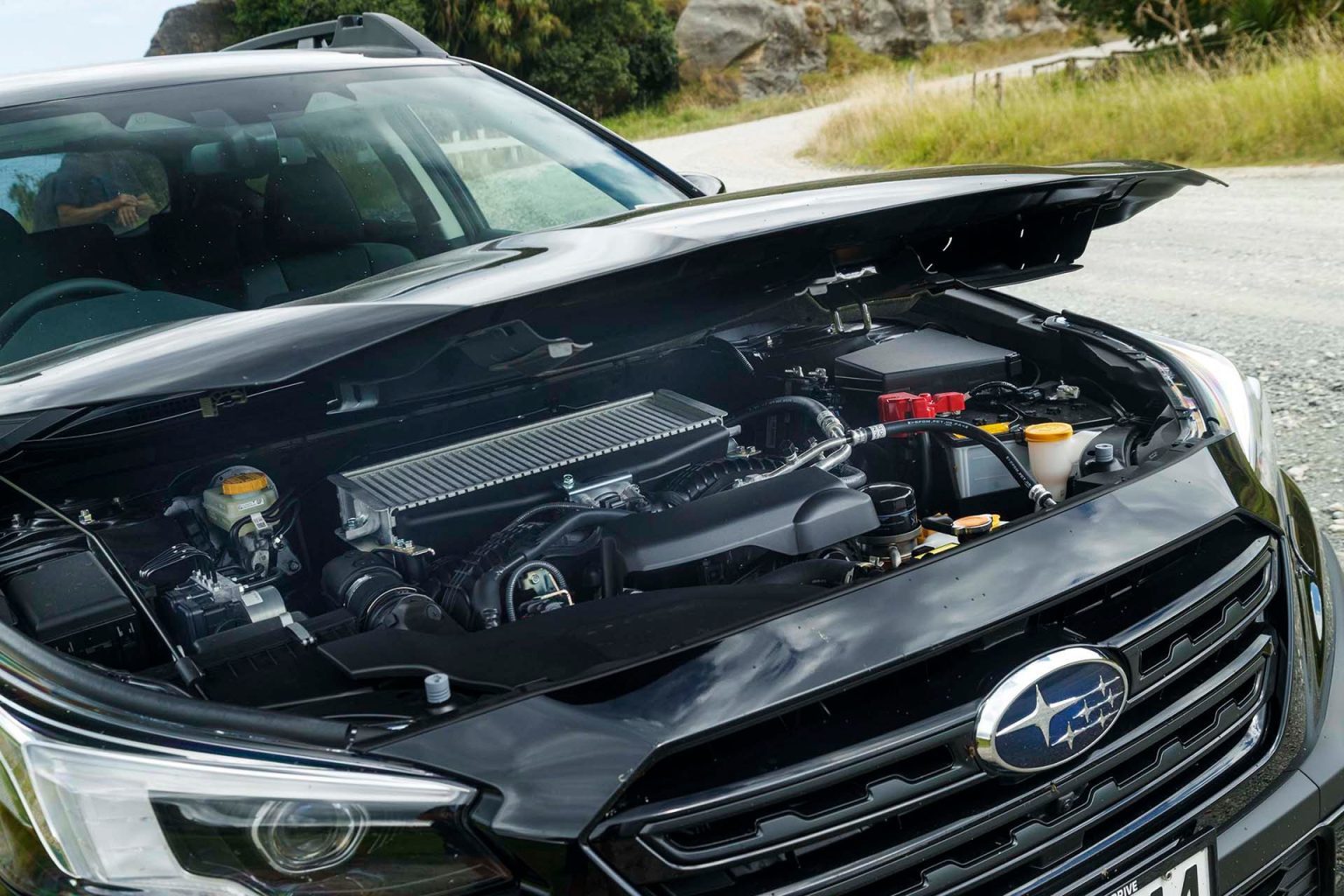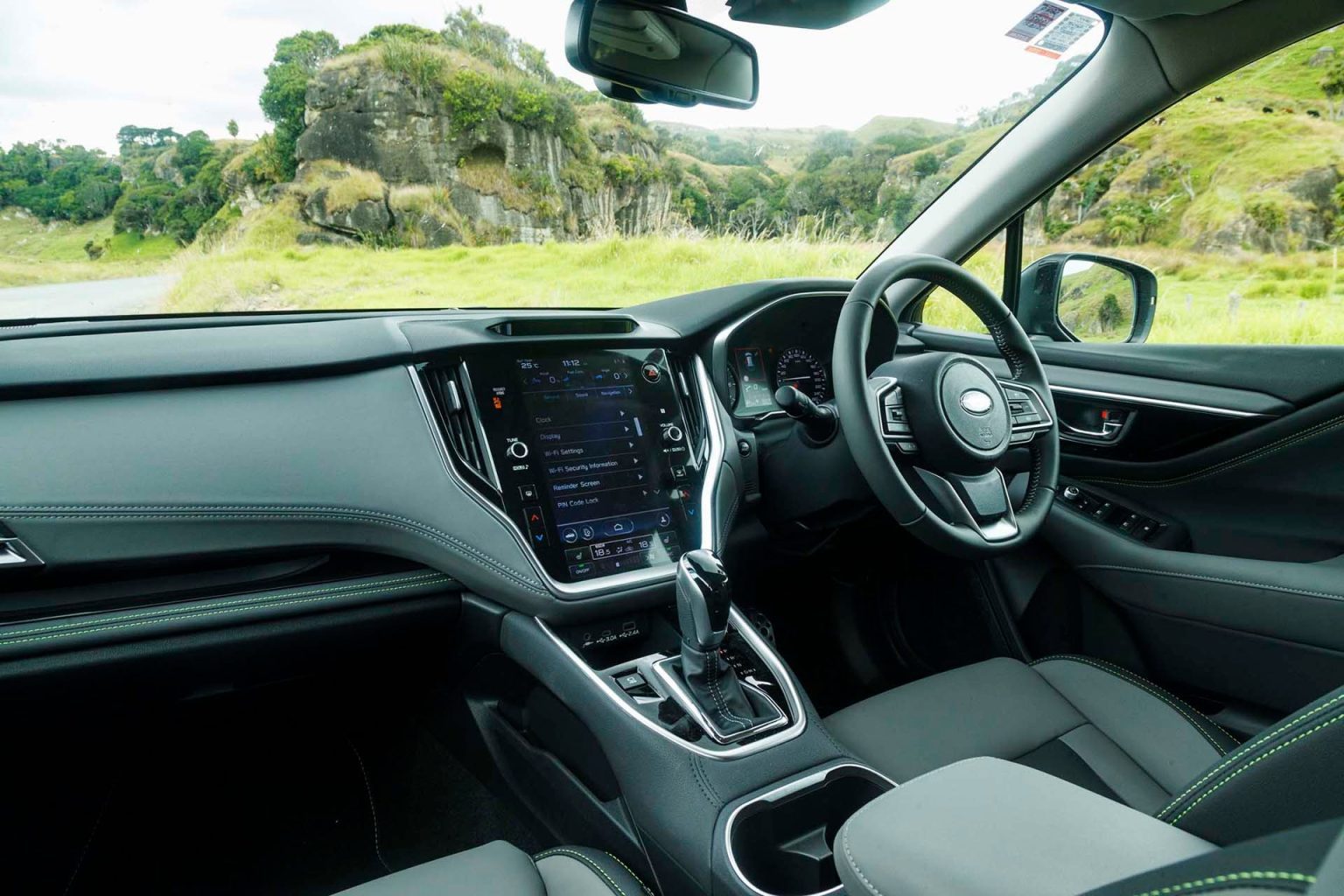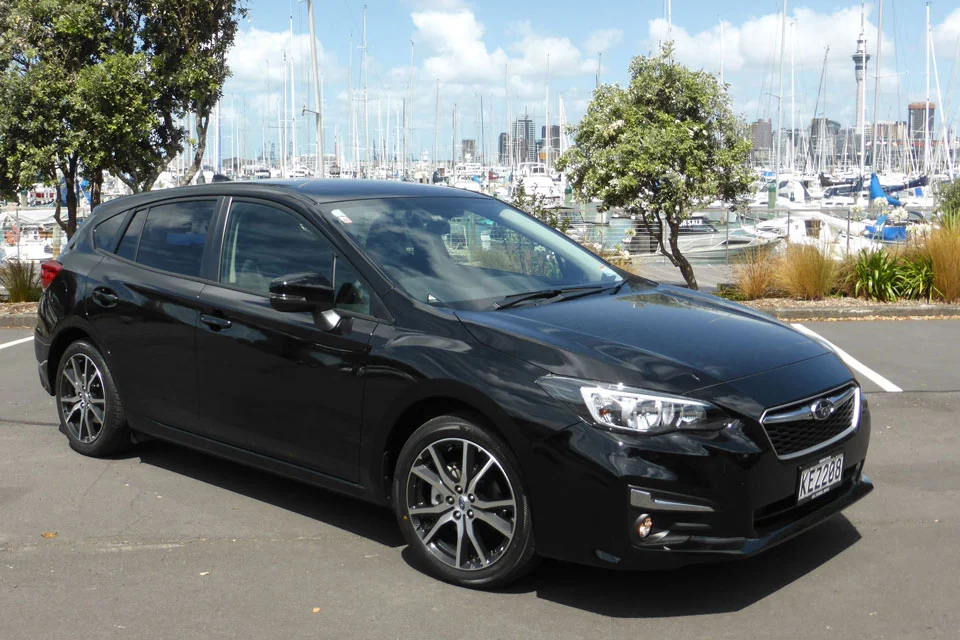2023 Subaru Outback XT review
Subaru has added a pair of XT variants to the Outback line-up, both borrowing the WRX’s 2.4-litre turbocharged engine.

It’s the sheer ease that impresses.
They say good things take time and Subaru sure took long enough to take turbocharging to Outback, at least in our neck of the woods. It seems like this was just what it needed. The effortlessness of the 2.4-litre turbo makes Outback the refined and effortless all-weather, all-roads family conveyance it always threatened to be, only requiring an interior tart up to finish it off properly.
Subaru insists Outback’s an SUV and that’s okay for marketing purposes, even if it’s really just a jacked-up wagon. And a damned fine one at that. With the end of the naturally aspirated flat-six engine, it was time to haul the Outback kicking and screaming into the 21st century with a powertrain that worked rather successfully in WRX. For Outback it is detuned slightly, down 18kW on the Sportster but the torque tally is the same.
Ours was virtually brand spankers, and kicked off proceedings imbibing in the 17L/100km range. The XT Turbo variant we drove had precisely 60kays on the odo when we picked it up. After an initial drive, some 150km later, the overall fuel use figure had decreased to 13L/100km and over the following days, the average settled in the low tens. That’s largely where it remained.
Rightcar reckons on 10L/100km overall which we’d say is on the money. Subaru suggests 9.0 overall but that’s an ADR figure which we never saw. However, this is now a heavier Outback at 1700kg odd, it rides high, and there’s a sizeable IL4 with a turbo attached. Moreover, there’s no electrification of any sort so it was never going to set any fuel use records for the class.
Subaru had to strengthen its continuously variable transmission to handle the extra oomph, all 183kW of it, along with 350Nm of torque (roughly the same figures as the old flat six) and by doing so upped the tow-ability of Outback from two to 2.4 tonnes.
What is the turbocharged Subaru Outback like to drive?
You’re probably itching to know how it goes compared with the 2.5 mill so let’s go there first. Where the former Outback did the business okay, you’d be damning it with faint praise to say that of the new powertrain. It’s just so much more effortless, which plays right into the hands of what was already one of the more refined family wagons at this price level. Because peak torque is all there from 2000rpm (it’s more like 4400rpm for the flat six and 2.5L four) there’s genuinely solid pulling power right across the 2000-3000rpm range, while it seems to get its second wind at around 3500rpm. Then the XT really romps away. The engine when working in its day-to-day rev zone is all but inaudible and so too road noise, on most surfaces 66dB being about as loud as it gets. We didn’t record any SPL measurements in the 70s.
As to how it goes when given a tickle, Subaru reckons the old Outback took 9.6sec to reach 100. This new one simply creams that at 7.1sec. Oddly, that’s how long the former 2.5 NA Outback used to take to achieve an overtaking manouevre. Now it’s dusted in just 4.6sec, or 131m. Much. More. Like. It.
These figures were obtained in the Sport mode but we didn’t bother with that much otherwise; it’s best reserved for more interesting roads, or maybe when you’re just wanting to show Outback 2.5 owners what they’re missing out on. Stick to the ‘I’ mode most of the time because that’s the best for a mix of everyday performance and fuel use. Stop/start helps and it’s quick on the getaway.
Brake function is good, better than that, not that you’d know from the figures but then Outback has never really been outstanding on that front because of the dual purpose-type rubber it wears. That’s no different in the latest model, our best emergency stop of 38m reflecting the fact the Bridgestone Alenza rubber is multipurposed.
We didn’t go bush exactly in the Outback so didn’t try the Dual X-Mode (with mud and snow functions) but did take it into the backblocks to see how it went on metal roads. And I guess outstanding about covers it. Even with all the stability aids off, this is all but unstickable unless you’re just being silly. The symmetric AWD and torque vectoring by brake see to that.
Is the Subaru Outback XT’s interior any good?
Our one real gripe with the new Outback is the one we always have with most Subarus – the company seems to be roughly a generation behind what most others are doing on the HMI (human machine interface) front. Aesthetically it’s not quite up to scratch – the main page of the info screen is overdone with options – and we’d say the same for functionally. The reversing camera is way too small to get an easy handle on things, and too many functions are relegated to the central touch screen. It’s not even that easy to change HVAC settings. All the while the driver monitor is telling you to keep your eyes on the road. So the first thing you need to do is silence that piece of silliness. On the upside, retripping the odo is simple because there’s an actual retrip button.
Unfortunately the complexity applies for all the lane keeping gubbins which naturally don’t add to the purity of the steering experience. Turn it to All Off and parts return again at the next restart so it’s into the myriad submenus to turn it All Off again. Pity because the Outback steers rather nicely – haven’t they always? – albeit with some safe and expected understeer as you’re nearing the grip limits, managed in the end by independent brake nipping. However, these are higher limits than you get in most other ‘SUVs’.
On the rest of the cabin, we like the washable leather-like finishings. We’re not quite sure why Subaru has gone with green double stitching given the Outback has nothing much green in the way of environmental creds.
Room everywhere is generous, especially in the rear where two of the passengers have seat warmers (pity the youngest child in the middle seat, never mind). Further back, and there’s a powered fifth door opening into a generous space with numerous tie down rings, hooks etc, and a couple of releases that unlatch spring-loaded seat backs, leading to a totally flat load space. There’s a full spare beneath too.
The XT at $67,990 (plus $2350 clean car fee), is one of two new Outbacks, but still comes loaded with safety gubbins (some might say overloaded). If you’re after the top model, the XT Turbo Touring, it costs $5k more, and adds Nappa leather accents for the seats which are also vented up front, an electric sunroof and heated wheel, an HK audio update, and a gesture-controlled tailgate. Both have an excellent five-star safety rating from ANCAP, all those accident-preventing bits and bobs giving it a 96 per cent safety assist rating.
Is the Outback XT worth the extra spend?
If you’re okay with petrol use around the 10L/100km mark in general use, and the dash aesthetics/functionality, then yes, we’d say very much worth it for the easy performance available, the increased towing rate and the improved refinement over its atmo predecessor. It’s really a terrific family wagon, as we discovered in the recent big wet, fording flooded roads as well as any other high rider out there.
Minor foibles aside, this does more than enough to keep the Outback faithful staying the course.
| Model | Subaru Outback XT |
| Price | $67,990 |
| Clean Car Discount | Fee + $2357.50 |
| Engine | 2387cc, B4, T, DI |
| Power/Torque | 183kW/350Nm |
| Drivetrain | CVT, AWD |
| Fuel Use | 10.0L/100km |
| C02 Output | 230g/km |
| 0-100km/h | 7.10sec |
| 80-120km/h | 4.63sec (131.8m) |
| 100-0km/h | 38.10m |
| Stability systems | ABS, ESP, TV |
| Safety | AEB, ACC, BSM, LDW, RCTA, ALK, AHB |
| Luggage Capacity | 522-1782L |
| Tow rating | 750kg (2400kg braked) |
| Service intervals | 12 months/12,500km |
| Scheduled plan | 3 years/45,000km (opt) |
| Warranty | 3 years/100,000km |
| ANCAP rating | 5 stars (2017) |
| Weight | 1692kg (claimed) |
This article was originally published on autocar.co.nz
Also consider






